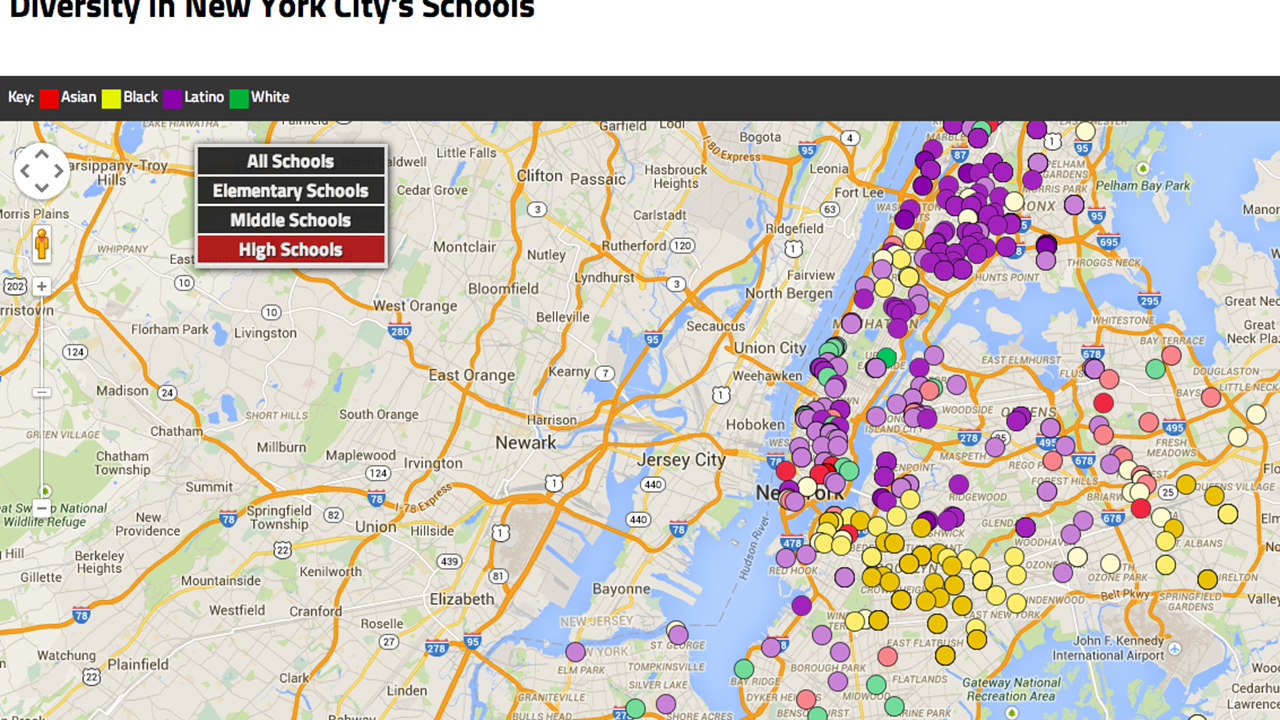DNAinfo has kicked off a series that examines diversity (and lackthereof) in New York City’s public schools with a map that illustrates the breakdown of the schools by race — and the contrast is startling. In March, UCLA’s Civil Rights Project found that New York City, which boasts an incredibly diverse population and has the largest public school system in the world, is also one of the most segregated in the nation (notably, more so than Mississippi’s). Though it comes months later, DNAinfo’s interactive map provides a necessarily visual supplement to that report.
Black and latino students make up two-thirds of New York’s 1.1 million public school students with the other third being Asian (17%) and white (15%). However, the site found that “very few kids attend schools that reflect that racial breakdown, and thousands are learning in classrooms that are almost entirely composed of students of a single race.” Here are the findings from DNAinfo’s analysis:
Segregation starts in elementary school, when most children attend local zoned programs that reflect the makeup of the surrounding neighborhood. These schools are often segregated by race and class, as affluent families move to attend specific schools in neighborhoods like TriBeCa and the Upper West Side.
But even in middle school and high school — when children are able to pick schools farther from home — similar patterns of segregation persist, DNAinfo’s analysis found.
Many families struggle with the city’s complex middle and high school admissions process, which parents say is even more stressful than applying to college. Some parents are not aware of their kids’ options because of language barriers, while others may be too busy working to attend the many school tours and information sessions, advocates said.
As a result, there is little mixing between white and black students, from elementary school all the way through high school, DNAinfo’s analysis found.
Just 4 percent of white students across the city attend schools where black kids are the largest group, data shows. Conversely, only 5 percent of the city’s black students attend schools where white kids are the largest group.
There is a similar separation between black and Asian students, DNAinfo found.
While school officials and students interviewed by DNAinfo show that many are actively working to promote diversity, there is a large systemic failure that requires policy changes. The UCLA’s Civil Rights Project report concluded that the segregation is due to “residential patterns, a lack of commitment, market-oriented framework, and school policy reversals,” and requires serious intervention at the institutional level to improve race relations in the city’s schools.
(Image: DNAinfo)


